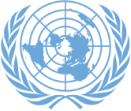





| Government | Country Info | Symbols | Constitution | Holidays | Map |
History
South Africa occupied the German colony of South-West Africa during World War I and administered it as a mandate under UN Trusteeship until after World War II, when it annexed the territory. On 19 April 1960 the South-West Africa People's Organization (SWAPO) was formed as a liberation movement, and in 1966 launched an armed liberation struggle for independence for the area that was soon named Namibia. It was not until 1988 that South Africa agreed to end its administration in accordance with a UN peace plan for Namibia. Namibia won its independence in 1990 under the supervision of the United Nations Transitional Assistance Group (UNTAG) and has been governed by SWAPO since. Hifikepunye Pohamba was elected president in November 2004 in a landslide victory replacing Sam Nujoma who led the country during its first 14 years of self rule.
Geographic Location
South west of Africa bordering Angola, Botswana, South Africa, Zambia and Zimbabwe.
Geography - note
Namibia is the first country in the world to incorporate the protection of the environment into its constitution; some 14% of the land is protected, including virtually the entire Namib Desert coastal strip.
Area:
824,269 square kilometers
Coastline
1,572 km
Maritime claims
Territorial sea: 12 nm contiguous zone: 24 nm exclusive economic zone: 200 nm
Climate
Primarily arid and semi-arid, sub-tropical in the north-east. The hottest months are between January and February, with average maximum day temperatures ranging between 20ºC and 36ºC. Average minimum winter temperatures range between 6ºC and 10ºC, with average day temperatures of between 18ºC and 22ºC.
Terrain
With its surface area of 824 268 km, Namibia is a vast country, even by African standards. Mostly high plateau; Namib Desert along coast; Kalahari Desert in east.
Natural resources
Diamonds, copper, uranium, gold, lead, tin, lithium, cadmium, zinc, salt, hydropower, fish
note: suspected deposits of oil, coal, and iron ore.
Environment - current issues
Very limited natural fresh water resources; desertification; wildlife poaching; land degradation has led to few conservation areas.
Environment - international agreements
Party to: Antarctic-Marine Living Resources, Biodiversity, Climate Change, Climate Change-Kyoto Protocol, Desertification, Endangered Species, Hazardous Wastes, Law of the Sea, Ozone Layer Protection, Wetlands signed, but not ratified: none of the selected agreements.
Population
1.8 million. The country has a population density of 1.7 persons per square kilometer, one of the lowest in the world, and an annual population growth of 3.1%, one of the highest in Africa.
Ethnic groups
Black 87.5%, white 6%, mixed 6.5%
note: about 50% of the population belong to the Ovambo tribe and 9% to the Kavangos tribe; other ethnic groups are: Herero 7%, Damara 7%, Nama 5%, Caprivian 4%, Bushmen 3%, Baster 2%, Tswana 0.5%
Religions
Christian 80% to 90% (Lutheran 50% at least), indigenous beliefs 10% to 20%.
Languages
English (official), Afrikaans common language of most of the population, German, indigenous languages: Oshivambo, Herero, Damara-Nama.
Capital
Windhoek, with a population of 183 000 (1996 estimate), is Namibia's administrative, judicial and legislative capital.
Main Towns
Oshakati, Walvis Bay, Swakopmund, Lüderitz, Tsumeb, Oranjemund, Rehoboth, Keetmanshoop, Rundu, Ondangwa, Grootfontein, Mariental, Otjiwarongo, Okahandja, Gobabis and Katima Mulilo.
Currency
Namibian Dollar (N$) pegged 1:1 to the South African Rand.
Economy - overview
The economy is heavily dependent on the extraction and processing of minerals for export. Mining accounts for 20% of GDP. Rich alluvial diamond deposits make Namibia a primary source for gem-quality diamonds. Namibia is the fourth-largest exporter of nonfuel minerals in Africa, the world's fifth-largest producer of uranium, and the producer of large quantities of lead, zinc, tin, silver, and tungsten. The mining sector employs only about 3% of the population while about half of the population depends on subsistence agriculture for its livelihood. Namibia normally imports about 50% of its cereal requirements; in drought years food shortages are a major problem in rural areas. A high per capita GDP, relative to the region, hides the great inequality of income distribution; nearly one-third of Namibians had annual incomes of less than $1,400 in constant 1994 dollars, according to a 1993 study. The Namibian economy is closely linked to South Africa with the Namibian dollar pegged to the South African rand. Privatization of several enterprises in coming years may stimulate long-run foreign investment. Mining of zinc, copper, and silver and increased fish production led growth in 2003-05.
GDP growth (1993-2002)
4% average
GDP per capita (2002)
N$ 17, 580 (US $2, 197)
Inflation (1993-2002)
8.5% average
Key Economic sectors/GDP (1993 - 2002)
19% primary, 16% secondary, 55% tertiary
Industries
Meatpacking, fish processing, dairy products; mining (diamond, lead, zinc, tin, silver, tungsten, uranium, copper).
Main Exports
52% minerals (+/- 70% diamonds) 25% fish and fish products, 13% live animals, meat and animal products.
Main Export Destinations
United Kingdom, South Africa, Spain, Germany, Italy, France, Japan, Switzerland, United States, Angola and the Netherlands.
Budget deficit
3.1% of GDP for the financial year 2002/03


